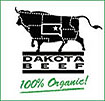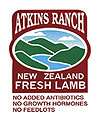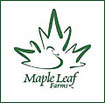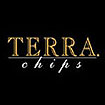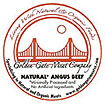By
ERIC TALMADGE

(AP)
A "Winebot," or a robot that can taste,
fires off a beam of infrared light from its left
arm to a...
TSU, Japan (AP) - The ability to
discern good wine from bad, name the specific brand
from a tiny sip and recommend a complementary cheese
would seem to be about as human a skill as there
is. In Japan, robots are doing it.
Researchers at NEC System Technologies and Mie University
have designed a robot that can taste - an electromechanical
sommelier able to identify dozens of different wines,
cheeses and hors d'oeuvres.
"There are all kinds of robots out there doing
many different things," said Hideo Shimazu,
director of the NEC System Technology Research Laboratory
and a joint-leader of the robot project. "But
we decided to focus on wine because that seemed
like a real challenge."
Last month, they unveiled the fruits of their two-year
effort - a green-and-white prototype with eyes,
a head that swivels and a mouth that lights up whenever
the robot talks.
The "tasting" is done elsewhere, however.
At the end of the robot's left arm is an infrared
spectrometer. When objects are placed up against
the sensor, the robot fires off a beam of infrared
light. The reflected light is then analyzed in real
time to determine the object's chemical composition.
"All foods have a unique fingerprint,"
Shimazu said. "The robot uses that data to
identify what it is inspecting right there on the
spot."
When it has identified a wine, the robot speaks
up in a childlike voice. It names the brand and
adds a comment or two on the taste, such as whether
it is a buttery chardonnay or a full-bodied shiraz,
and what kind of foods might go well on the side.
Shimazu said the robots could be "personalized,"
or programmed to recognize the kinds of wines its
owner prefers and recommend new varieties to fit
its owner's taste. Because it is analyzing the chemical
composition of the wine or food placed before it,
it can also alert its owner to possible health issues,
gently warning against fatty or salty products.
That capability has other useful applications. Given
three ripe, identical-looking apples to analyze,
the robot was able without taking a bite to correctly
single out one as sweet and the other two as a bit
sour.
But sommeliers need not fear for their jobs just
yet.
Of the thousands of wines on the market, the robot
can be programmed to accurately identify only a
few dozen at most. It also has more trouble with
the task after the bottle has been opened and the
wine begins to breathe and thus transform chemically.
"Wines are notoriously similar in their spectral
fingerprints," Shimazu said. "The variation
this robot detects is very subtle."
Some of the mistakes it makes would get a human
sommelier fired - or worse.
When a reporter's hand was placed against the robot's
taste sensor, it was identified as prosciutto. A
cameraman was mistaken for bacon.
The 2-foot-tall robot also is expensive.
"Buying one of these would cost about as much
as a new car," Shimazu said. "We'd like
to bring that down to 100,000 yen ($1,000) or less
for the tasting sensor if we were to put it on the
market."
He said there is no plan yet to actually market
the robot, though the sensor could be available
as early as next year.
"We are getting a lot of business offers and
a lot of interest," he said. "But we see
this more as a symbol of our technological ability
than as a profitable product right now."
Mie University engineering professor Atsushi Hashimoto,
the project's other co-leader, acknowledged there
is much room for improvement.
But he said the robot could be used in the near
future at wineries to test the taste of each bottle
without actually unscrewing any corks.
"It's still like a child," he said. "But
not a completely ignorant one."
Industry experts note the shortcomings but agree
on the robot's possibilities.
"I see the potential to analyze expensive and
old wine to say whether it is authentic or not,"
said Philippe Bramaz of the Italian winemaker Calzaluga.
"Auction houses such as Sotheby's and Christie's
could use this technology to test wine without opening
it."
 |






